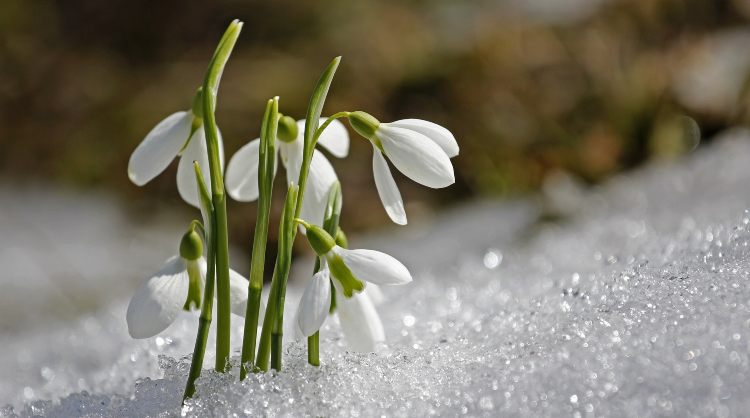
For the most part, the winter of 2022-2023 has been unseasonably warm. While we’ve had our cold snaps and snowfall, overall, the weather this year has been unusually mild, with the occasional cold snaps keeping us on our toes! While these temperatures jumping going from cold to warm to cold again might not seem like a big deal, this kind of erratic weather can be confusing to plant life, and can even lead to what’s known as a false spring.
The term ‘false spring’ is pretty well known within horticultural communities, but if you’re not quite sure what it means, in this blog we’ll be getting into exactly what a false spring is, what happens during a false spring, and why they’re bad.
What is a false spring?
The term ‘false spring’ refers to a period in late winter or early spring when temperatures become unusually warm, before suddenly growing cold again. During a false spring, the warm weather can ‘trick’ vegetation into coming out of dormancy.
During a false spring it’s common for all kinds of wildlife to begin to grow and bloom in preparation for spring, only to be caught out by a sudden cold snap. When plants wake up early and begin to grow, their young succulent tissues can be very vulnerable to the cold, and can often become damaged or die as a result of the sudden return of cold temperatures.
Why is a false spring bad?
There have been a number of negative effects observed as a result of false springs; delicate leaves and flower buds that have already begun to bloom can die from the cold temperatures. Furthermore, studies have shown that trees affected by a false spring are more susceptible to disease and tend to produce less fruit.
This is because that, when real spring comes, the tree will have to pour extra resources into regrowing all that it lost in the false spring. This setback can result in the tree not being able to produce as many flowers and fruits as it does on ‘normal’ years, and in some extreme cases, it won’t be able to flower or fruit at all.
These side effects can be devastating for our local ecosystems with a reduction in natural habitat and shelter for local wildlife, nectar and nutrient availability, and even for our agricultural industries. False springs can be the cause of massive losses in production, which can cause financial losses to farmers.
Lawn care in Spring
Fluctuating temperatures and quick-changing weather conditions can make lawn care and anticipating your lawns needs difficult. If you’d like some expert advice or would like to arrange your FREE consultation for our professional lawn care services, reach out and contact us here at Lawn & Weed Expert today!
Contact Us
If you’d like to learn more about lawn care in the spring and take a look at some of the springtime lawn treatments we provide, check out our spring lawn care page by clicking the link below!
Spring Lawn Treatment
Read More: How to Get Your Lawn Ready for Spring